Aspekti Hegelove filozofije
Kronologijski povod kao što je stodvadesetpeta godišnjica Hegelove smrti mogao bi navesti na ono što se naziva ocjenjivanjem. Ali je pojam ocjenjivanja, ako je uopće ikada nešto vrijedio, postao nesnosan.
More...We kindly inform you that, as long as the subject affiliation of our 300.000+ articles is in progress, you might get unsufficient or no results on your third level or second level search. In this case, please broaden your search criteria.
Kronologijski povod kao što je stodvadesetpeta godišnjica Hegelove smrti mogao bi navesti na ono što se naziva ocjenjivanjem. Ali je pojam ocjenjivanja, ako je uopće ikada nešto vrijedio, postao nesnosan.
More...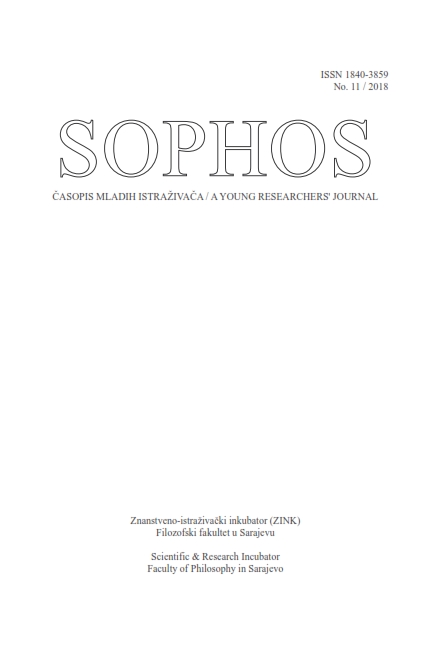
This paper is focused on the analysis of Brandom’s approach to implication and its importance for philosophy of inferentialism. The goal is to show that the implication is the central concept in the philosophy of inferentialism and that it is essential for understanding of inferentialism as an epistemic important position. For this purpose, the paper analyses Brandom’s turn towards material inference which allows the implicative content to expand in the way it takes into account the factual, material conditions and state of things. The paper wants to show that Brandom tries to reject the dogmas of formalism in that way and to turn towards practical discourse and language practices as the only framework where we can relevantly speak about the cognitive and epistemic problems in general.
More...
Der Beitrag stellt den Versuch dar, Hegels Refleksionen über den philosophischen Diskurs zu erörtern. Unsere These besagt, daß Hegels Lehre „spekulativen Satz“ in prägnanter Form und den wesentlichen Momenten die Reflexion (eine Widerspieglung) des Weges seinen eigenen, in der Phänomenologie des Geistes dargelegten Philosophie darstelt. Um die Sache weiter zuzuspitzen: unsere These, die wir zuuntermauern versuchen, läuft nicht nur darauf, daß in Hegels „philosophischem Satz“ das spekulative Wesen der Philosophie aufgezegt wird, sondern vor allem auf den Umstand, daß seine Ausführungen über den spekulative Satz in zusammengefaßter Form die in ihren wichtigsten Momenten dargelegte Philosophie Hegels beinhaltet.
More...
The present paper is devoted to the contribution of the eminent philosopher and mathematician Bernard Bolzano to the problem of continuum. The paper consists of two parts. In the first part it is compared the conception of Bolzano about the continuum with that of Aristotle. Bolzano’s view includes two essential moments: first, that the continuum is composed of noncontinual elements (points), and second, that two points which are at a certain distance one to other cannot compose a continuum. Aristotle has two definitions about continuity: in the first one he in fact develops the idea of continuity as a physical connectedness, and in the second one he emphasizes the infinite divisibility of the continuum. The second part of the paper gives an evaluation of Bolzano’s contribution to the problem of continuum in comparison with the achievements of the contemporary mathematics on the problem. There is a tendency to consider continuity in two senses: as an infinite divisibility and as a connectedness. The contemporary topology (as a branch of mathematics) develops the concept of continuity in the second sense. Bolzano’s conception bears in some respects the resemblance to the contemporary definitions in topology of the concepts of closeness, neighborhood, isolated point, etc. His definition about the continuum can be considered as a remote precursor of the contemporary topological definition of continuity as connectedness.
More...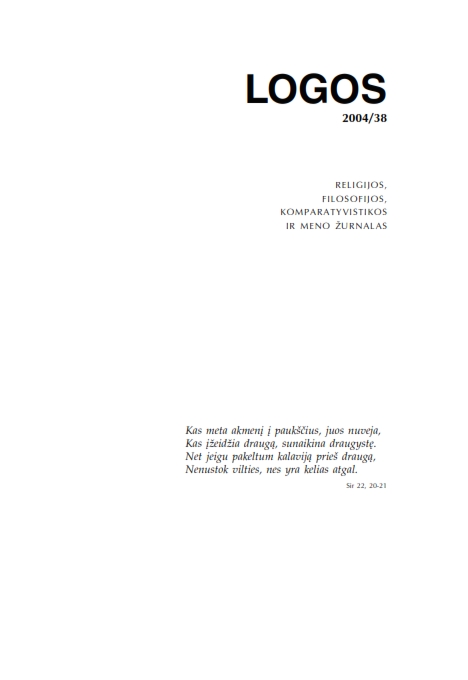
The analysis of the second operation of the human intellect presented in lectures on logics by the main representatives of scholastic logic in Lithuania of the second half of the sixteenth century, Marcin Úmiglecki and Diego Ortiz, virtually belongs to the so-called major logic (logica major). That is, the cardinal object of the above-mentioned analysis was the content of proposition. On the other hand, such an analysis involved some elements of dialectics, or minor logic (logica minor sive dialectica), namely, certain rules of logical square and conversion. Following the Aristotelian-scholastic tradition, Úmiglecki and Ortiz defined the proposition as a correct or false sentence (oratio vera sive falsa). Meanwhile, opposition, equivalence (aequipollentia) and convertibility were regarded as the main properties of proposition (propria propositionis). These properties were also interpreted in the spirit of the scholastic tradition. Úmiglecki and Ortiz traditionally considered necessary propositions the main elements of scientific knowledge. As for the terms of necessary proposition, it was affirmed that neither subject nor predicate ought to bear actual existence. That is, two conditions alone are necessary for these terms: a) there must be at least a logical potentiality (potentia logica) for the existence of a subject (that is, the subject needs not be a contradictory being, such as a circular square); b) such an existence having been assumed, the predicate must be inseparable from the existing subject.
More...
The social theory of knowledge developed by Marx and Engels is unfolded in three steps: (1) by explaining the meaning of dialectic as a form both of thinking and of being; (2) by discussing the anthropological and historical materialism that pervades the original Marxist epistemological perspective; (3) by presenting Marx’s and Engels’ belief that the material means and relations of production determine the existence of society in all respects; (4) by isolating the multiple senses of ideology as they occur in the writings of Marx and Engels and by discussing the various methods of unmasking the hidden agendas of ideologies. Throughout the article, a clear and sympathetic exposition of Marxist social epistemology is combined with an insightful and playful criticism of several inconsistencies that the author of the article finds in Marx’s and Engels’ accounts of things.
More...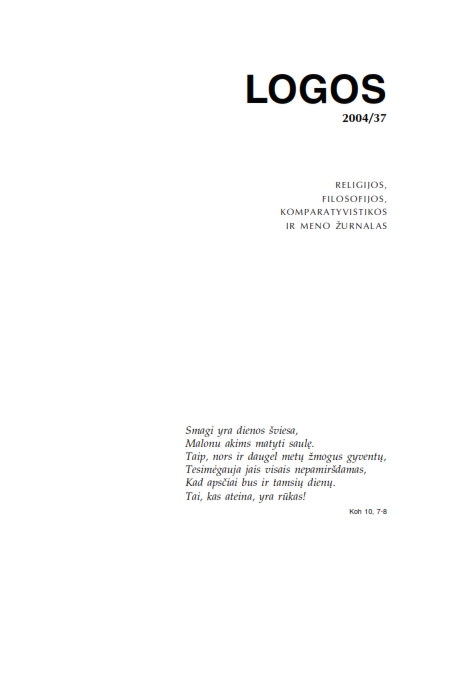
The social theory of knowledge developed by Marx and Engels is unfolded in three steps: (1) by explaining the meaning of dialectic as a form both of thinking and of being; (2) by discussing the anthropological and historical materialism that pervades the original Marxist epistemological perspective; (3) by presenting Marx’s and Engels’ belief that the material means and relations of production determine the existence of society in all respects; (4) by isolating the multiple senses of ideology as they occur in the writings of Marx and Engels and by discussing the various methods of unmasking the hidden agendas of ideologies. Throughout the article, a clear and sympathetic exposition of Marxist social epistemology is combined with an insightful and playful criticism of several inconsistencies that the author of the article finds in Marx’s and Engels’ accounts of things.
More...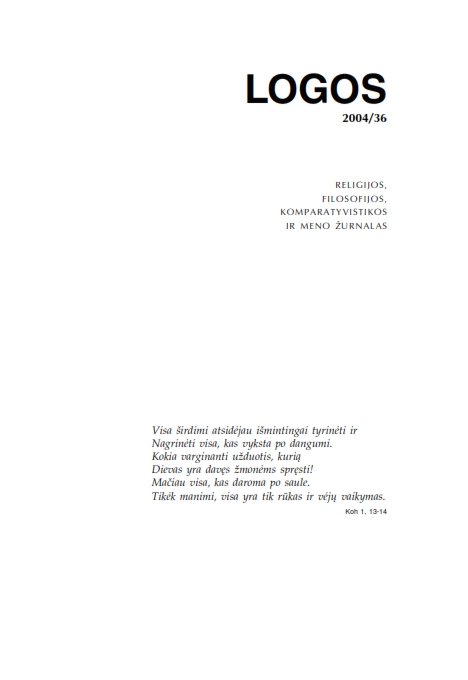
In this article the speculative premises of Scheler’s ethics are considered and the decisive influence of Husserl’s “Logical investigations” on them is shown. Ideas of Husserl, important to Scheler’s ethics, are considered in detail. It is shown that in his ethics Scheler supplanted Husserl’s intellectualism by the “commitment to the world”. He regarded Husserl’s theory as having the “remnants of ill-feeling towards the world”. Scheler’s concept of “ordo amoris” is analyzed as the most characteristic sign of his rejection of Husserl’s phenomenology.
More...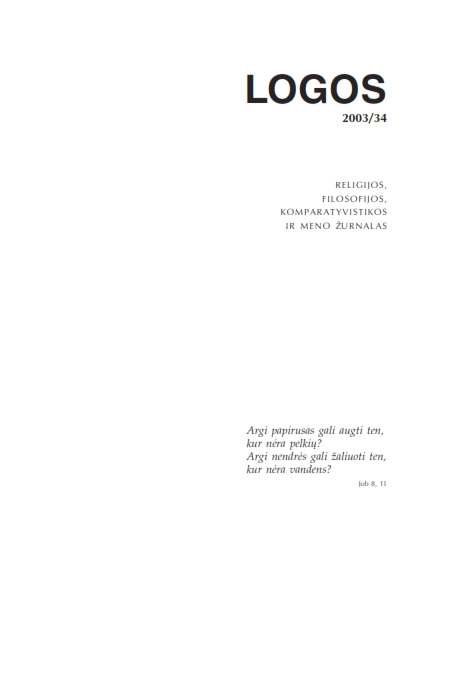
The philosopher and theologian Peter Abélard (1079-1142) was the first Medieval thinker who exposed human subjectivity as material for contemplation and the foundation for knowledge acquisition. According to M.-D. Chenu, this way Abélard awakened medieval consciousness. He contributed considerably to metaphysics, logic and ethics, and took an active part in the famous discussion concerning universals, enriching it by several questions: What is there in things which enables us to give them common names? If there are no actually existing universals, what do common names designate? If the things signified by universals cease to exist, would their names still mean the notion we have of these things? etc. He gave a new basis to ethics by valuing the intentions more than the results. An intention which itself is good can have as its effect a deed bad in itself, or inversely; but the moral act which a good intention dictates is always a good act, just as the one a bad intention dictates is always bad. But his most controversial achievement was bringing dialectics in theology in order to check the dogmas of the Church.
More...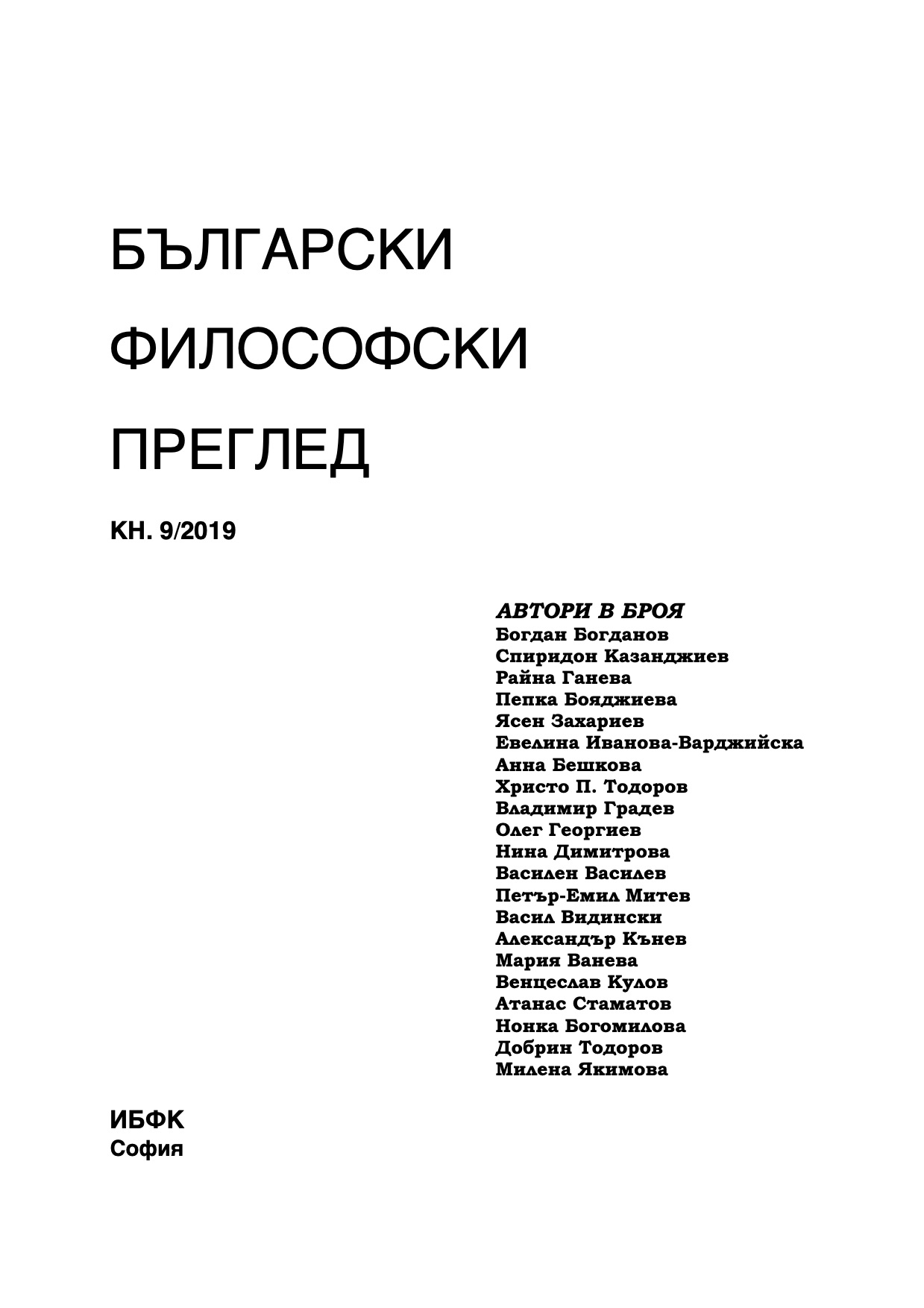
The paper discusses the establishment of "Civic Education" as a new subject at Bulgarian secondary school this year. The discussion focuses on the question of subject's public legitimation and its major goal. Claiming that Civic Education is a phenomenon of the Modern World I offer a brief historical sketch. It outlines those long term processes that feature the Modern World - secularization, industrialization, urbanization, democratization etc. After a short description of the current state of Civic Education I sketch three existing models of Civic Education - patriotism, participatory republicanism and autonomy. Eventually I make the conclusion that the conception of the new subject "Civic Education" combines elements of later two models. The major goal of "Civic Education" at Bulgarian secondary school consists of two components - understanding of the complexity of Modern Social World and building of Civic Capacity.
More...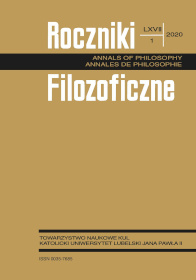
An article is an introductory analysis of concept of religious belief in the language of logic. In its first part, there is a comparison of the concept of religious belief with the concept of scientific belief, next part is a presentation and analysis of Bocheński’s conception of rationality of religious beliefs (and their justification), and the third part of article is an attempt of analysis of Aquinas conception of faith (in Sth II-II) in the light of contemporary logic.
More...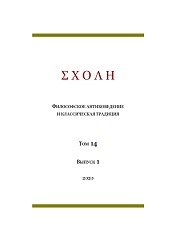
The paper tests the methodology of architectural and ethnographic research of the object of material culture-a masterpiece of world architecture of the Roman Pantheon. The method involves performing the proportional-metrological analysis of the forms using the results of three-dimensional laser scanning. The sequence of actions allowing receiving extremely reliable dimensional drawings of necessary elements of an architectural monument is presented. The analysis suggests that the design metrological module of the Pantheon was a Roman foot of 0.445 m. A detailed analysis of the size of the rotunda plan made it possible to confirm the hypothesis that the design was based on the use of an integer analogue of the number "PI" - fraction 22/7. In addition, an integer right triangle 5: 12: 13 could be used to construct the right angle and to determine the basic proportions of the elements of the facade of the portico. Apparently, in the process of designing the forms of the Pantheon, the method of harmonizing elements on the basis of the similarity method with a change in their scale was used
More...
This paper discusses the system of the pictorial depth representation, typical for Giotto and other Italian artists of 14th century. Differing from the linear perspective, this system has a number of peculiar features, and its own consistent logic for the formation of pictorial space. The paper is especially focused on the contradictions of such a system, which lead to the appearance of impossible figures, and the ways in which the artists solved these difficulties.
More...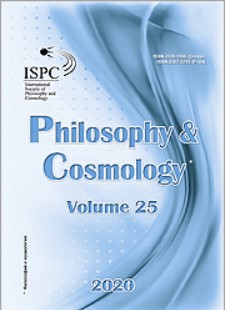
The article presents a comparative analysis of neo-realist views of Russell and Whitehead on cosmology in the first decades of the 20th century. It is noted that despite the similarity of the basic theoretical and methodological principles of their philosophizing, these thinkers formulated philosophical-cosmological conceptions that differed significantly from each other. The reason for this was that Russell, at the epistemological level, used the theory of degrees of certainty, and on the logical one he developed the theory of descriptions, but Whitehead, in contrast, was a supporter of the theory of critical realism in epistemology and the method of extensive abstraction in logic. All this influenced the former to pay more attention to the questions of analysis and, accordingly, to use the basic concepts of facts, logical atoms, and propositions, and the latter to focus on the question of synthesis and to consider the structure of being through the prism of concepts of actual entities, eternal objects and prehension. Hence the world for Russell is a static formation (set of events), and we only need to define its laws, and for the Whitehead world is a dynamic formation (set of processes), the laws of which still need to be understood. It is emphasized that as a result, Russell’s cosmology rejected the previous metaphysics, but Whitehead’s cosmology aimed at finding the origins of modern cosmology in the writings of early thinkers. Nevertheless, it is argued that the cosmological teachings of both had a significant influence on the development of analytic philosophy.
More...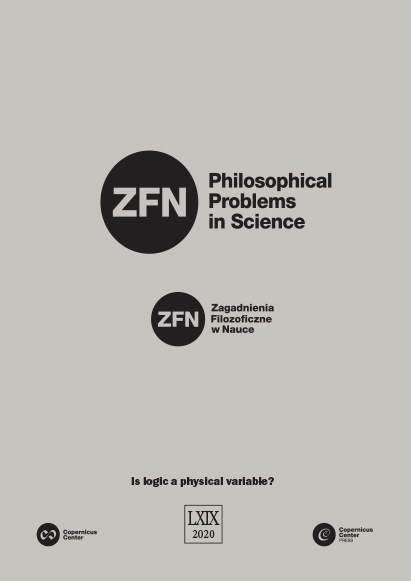
Structuralism has recently moved center stage in philosophy of mathematics. One of the issues discussed is the underlying logic of mathematical structuralism. In this paper, I want to look at the dual question, namely the underlying structures of logic. Indeed, from a mathematical structuralist standpoint, it makes perfect sense to try to identify the abstract structures underlying logic. We claim that one answer to this question is provided by categorical logic. In fact, we claim that the latter can be seen—and probably should be seen—as being a structuralist approach to logic and it is from this angle that categorical logic is best understood.
More...
Starting from logical structures of classical and quantum mechanics we reconstruct the logic of so-called no-signaling theories, where the correlations among subsystems of a composite system are restricted only by a simplest form of causality forbidding an instantaneous communication. Although such theories are, as it seems, irrelevant for the description of physical reality, they are helpful in understanding the relevance of quantum mechanics. The logical structure of each theory has an epistemological flavor, as it is based on analysis of possible results of experiments. In this note we emphasize that not only logical structures of classical, quantum and no-signaling theory may be treated on the same ground but it is also possible to give to all of them a common ontological basis by constructing a “phase space” in all cases. In non-classical cases the phase space is not a set, as in classical theory, but a more general object obtained by means of category theory, but conceptually it plays the same role as the phase space in classical physics.
More...
Quantum geometry on a discrete set means a directed graph with a weight associated to each arrow defining the quantum metric. However, these ‘lattice spacing’ weights do not have to be independent of the direction of the arrow. We use this greater freedom to give a quantum geometric interpretation of discrete Markov processes with transition probabilities as arrow weights, namely taking the diffusion form ∂+f = (−Δθ + q − p)f for the graph Laplacian Δθ, potential functions q, p built from the probabilities, and finite difference ∂+ in the time direction. Motivated by this new point of view, we introduce a ‘discrete Schrödinger process’ as ∂+ψ = ı(−Δ + V )ψ for the Laplacian associated to a bimodule connection such that the discrete evolution is unitary. We solve this explicitly for the 2-state graph, finding a 1-parameter family of such connections and an induced ‘generalised Markov process’ for f = |ψ|2 in which there is an additional source current built from ψ. We also mention our recent work on the quantum geometry of logic in ‘digital’ form over the field F2 = {0, 1}, including de Morgan duality and its possible generalisations.
More...
This is an overview article that contains the discussion of the connection between information and physics at the elementary level. We present a derivation of Lindauer’s bound for heat emission during irreversible logical operation. In this computation the Szilard’s version of Maxwell’s demon paradox is used as a model to design thermodynamic implementation of a single bit of computer memory. Lindauer’s principle also motivates the discussion on the practical and emergent nature of the information. Apart from physics, the principle has implications in philosophy.
More...
The interaction between syntax (formal language) and its semantics (meanings of language) is one which has been well studied in categorical logic. The results of this particular study are employed to understand how the brain is able to create meanings. To emphasize the toy character of the proposed model, we prefer to speak of the homunculus brain rather than the brain per se. The homunculus brain consists of neurons, each of which is modeled by a category, and axons between neurons, which are modeled by functors between the corresponding neuron-categories. Each neuron (category) has its own program enabling its working, i.e. a theory of this neuron. In analogy to what is known from categorical logic, we postulate the existence of a pair of adjoint functors, called Lang and Syn, from a category, now called BRAIN, of categories, to a category, now called MIND, of theories. Our homunculus is a kind of “mathematical robot”, the neuronal architecture of which is not important. Its only aim is to provide us with the opportunity to study how such a simple brain-like structure could “create meanings” and perform abstraction operations out of its purely syntactic program. The pair of adjoint functors Lang and Syn model the mutual dependencies between the syntactical structure of a given theory of MIND and the internal logic of its semantics given by a category of BRAIN. In this way, a formal language (syntax) and its meanings (semantics) are interwoven with each other in a manner corresponding to the adjointness of the functors Lang and Syn. Higher cognitive functions of abstraction and realization of concepts are also modelled by a corresponding pair of adjoint functors. The categories BRAIN and MIND interact with each other with their entire structures and, at the same time, these very structures are shaped by this interaction.
More...
Book review: Category Theory in Physics, Mathematics, and Philosophy, Kuś M., Skowron B. (eds.), Springer Proc. Phys. 235, 2019, pp.xii+134.
More...